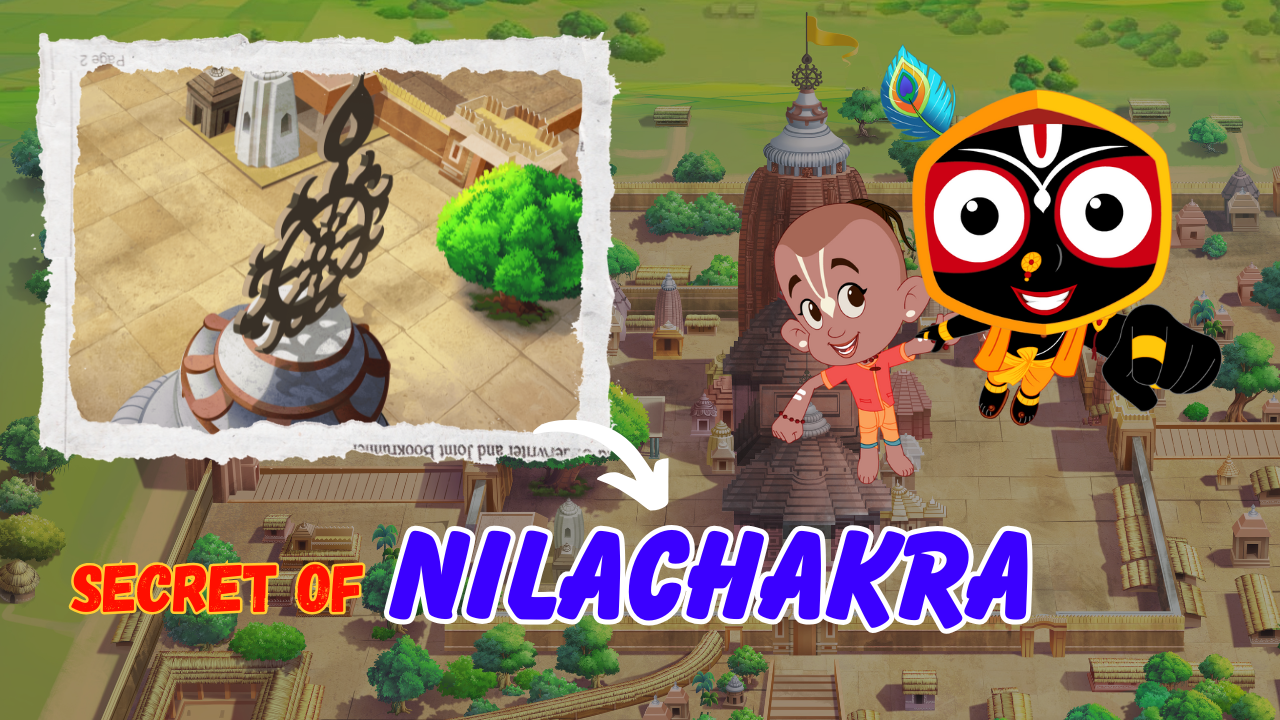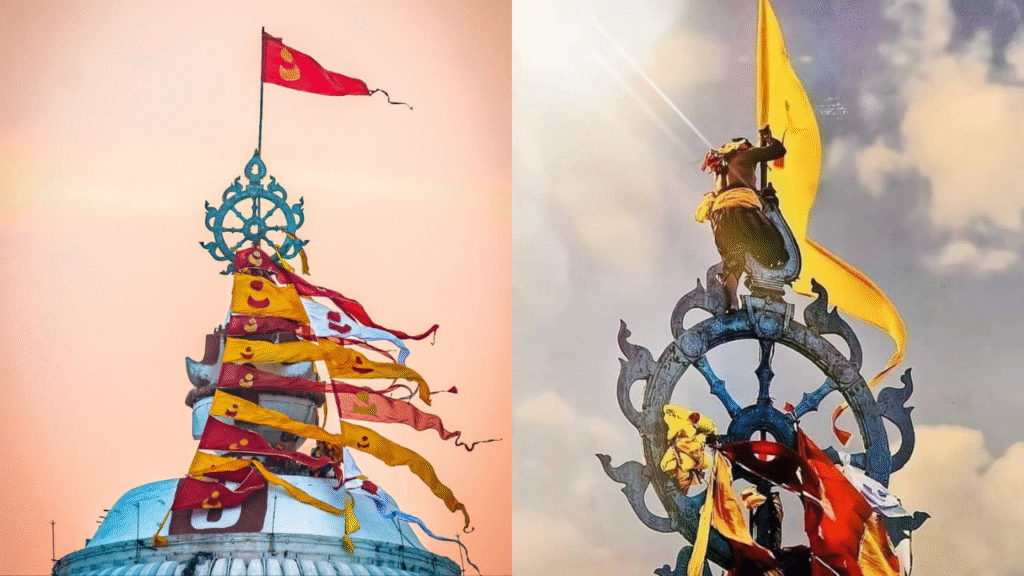
The Secret of Nilachakra: Why It’s Made of Ashtadhatu and Never Rusts
The Secret of Nilachakra, high above the Shree Jagannath Temple in Puri, glinting in the sunlight and enduring storms from the Bay of Bengal, rests a mysterious and sacred artifact—the Nilachakra. At first glance, it’s just a metal wheel. But behind its silent stillness lies a legend of divine engineering, timeless protection, and spiritual symbolism.
For over a thousand years, this wheel has withstood corrosion, lightning, cyclones, and invasions—and yet it has never rusted. How is this possible? Let’s delve into the hidden truths.
What Exactly Is the Nilachakra?
The Nilachakra (meaning Blue Disc) is not merely decorative. It is a symbol of Sudarshan, the celestial weapon of Lord Vishnu, and represents divine vision, protection, and the cosmic cycle of time.
Placed atop the 214-feet-high Shikhara (main tower) of the Jagannath Temple, the chakra is about 3.5 meters (11 feet) in diameter and weighs nearly 1.5 tons. With eight spokes, it aligns with the eight directions, believed to guard the temple and city from all sides.
Why Ashtadhatu?
The secret of the chakra’s longevity lies in its ancient composition—Ashtadhatu (Sanskrit: “eight metals”). Traditionally, this alloy includes:
-
Gold (symbol of purity)
-
Silver (serenity)
-
Copper (conductivity)
-
Zinc (resistance)
-
Lead (binding strength)
-
Tin (stability)
-
Iron (endurance)
-
Mercury/Antimony (fluidity/transmutation)
This blend of metals was chosen not just for physical durability, but for its spiritual resonance. Ashtadhatu idols are said to retain cosmic energy, making them suitable for temples and deities.
The metals also balance the elements—earth, water, fire, air, and ether—believed to maintain spiritual harmony in the temple ecosystem.

How Has It Never Rusted?
Science meets mysticism in the Nilachakra’s immunity to corrosion:
-
Salt-Resistant Alloy: Unlike pure metals, Ashtadhatu forms a natural protective layer that prevents oxidation in humid coastal conditions.
-
High Placement: Positioned at such a high altitude, it gets ample sunlight and air circulation, reducing moisture accumulation.
-
Magnetic Field: Some experts speculate that the chakra, due to its shape and metal content, may generate a magnetic field, subtly repelling particles and influencing microclimates.
-
Ritual Cleansing: Temple servitors (known as Garabadu Sevaks) maintain the chakra with ritual oils and sacred offerings that may add an additional protective coating.
-
Divine Engineering: Local legend says it was installed by the divine architect Vishwakarma himself—crafted not just with tools but with mantra and devotion.
Mystical Connections and Legends
-
Direction Marker: Wherever you are in Puri, you’ll always see only the front of the chakra, due to its ingenious design.
-
Patita Pavana Bana: Every day, a flag representing forgiveness for all fallen souls is tied to the Nilachakra. The ritual of climbing the 200-foot temple without support is considered sacred and extremely dangerous—yet no climber ever falls.
-
Hidden Protection: According to temple lore, the chakra is more than metal—it is said to be the watchful eye of Lord Jagannath, and a shield against evil energies.
Symbol of Dharma and Time
In Hindu dharma, the chakra signifies eternity—a wheel with no beginning or end, representing the continuous cycle of creation and destruction, karma and moksha, life and rebirth.
The eight spokes mirror the Ashta Bhairava, Ashta Dikpalakas, and Ashta Siddhis—universal forces that keep cosmic balance.
When devotees bow before the Jagannath Temple, they are not just seeing a metal disc—they are witnessing the cosmic wheel of dharma, turning silently in the sky.
A Spiritual and Scientific Marvel
Modern metallurgists, historians, and scientists have examined similar ancient structures but find the Nilachakra’s preservation truly exceptional.
But ask any Jagannath devotee, and they’ll say:
“It is not just metal. It is divine.”
Final Reflections
The Nilachakra is more than an object of worship. It is a living example of India’s ancient knowledge systems, metallurgy, ritual science, and faith-based engineering. It teaches us that when devotion and knowledge blend, miracles manifest—not just in temples, but in life.


Leave a reply here
Your email address will not be published. Required fields are marked *